Understanding Food Label Terminology
The claims on food packaging and food label terminology have specific meanings, defined by government regulation. Read the definitions carefully. Some food label terminology promises less than you might think.
- “Calorie free” means the food contains less than 5 calories per serving.
- “Low calorie” means the food contains 40 calories or less per serving. (For serving size, check the “Nutrition Facts” box on the back of the package.)
- “Reduced calorie” means the food contains at least 25 percent fewer calories than regular versions of the product.
- “Lite” or “light” means the food contains one-third fewer calories or no more than one-half the fat of the regular version of the product.
- “Fat free” means the food contains less than 0.5 grams of fat per serving.
- “Free” means the food contains none or trivial amounts of a substance, such as sodium, fat, cholesterol, calories, or sugars.
- “Low fat” means 3 grams of fat (or less) per serving.
- “Reduced fat” means at least 25 percent less fat than regular versions of the food. (This can be misleading food label terminology. Note that a “reduced-fat” mayonnaise or margarine will still contain plenty of fat. “Reduced fat” may be many calories away from “low fat.”)
- “Cholesterol free” means the food has no more than 2 milligrams of cholesterol and 2 grams or less of saturated fat per serving.
- “Low cholesterol” means the food has no more than 20 milligrams of cholesterol (or less) and 2 grams or less of saturated fat per serving.
- “Low saturated fat” means the food has 1 gram or less of saturated fat per serving.
- “Lean” means fewer than 10 grams of fat, 4 grams of saturated fat, and 95 milligrams of cholesterol per serving or per 100 grams of a food. “Extra lean” means the food has less than 2 grams of saturated fat and less than 5 grams of total fat.
- “Fresh” means unprocessed, uncooked, unfrozen (e.g., freshly squeezed orange juice). Washing and coating of fruits and vegetables are allowed. If a food has been quickly frozen, it can be described as “fresh-frozen,” which is food label terminology commonly used with fresh fish.
- “Healthy” means the food may contain no more than 3 grams of fat (including 1 gram of saturated fat) and 60 milligrams of cholesterol per serving. The food must also contain 10 percent of the recommended daily value of one of these nutrients: vitamin A, vitamin C, calcium, iron, protein, or fiber. “Healthy” individual foods must contain no more than 300 milligrams of sodium; prepackaged meals can’t exceed 480 milligrams. Healthy is another example of tricky food label terminology. There is no limit on the sugar content in “healthy” food.
- “Natural flavors” are defined by the Federal Food, Drug, and Cosmetic Act as “the essential oil, oleoresin, essence or extractive, protein hydrolysate, distillate, or any product of roasting, heating, or enzymolysis, which contains a flavoring constituent derived from a spice, fruit or fruit juice, vegetable or vegetable juice, edible yeast, herb, bark, bud, root, leaf or similar plant material, meat, seafood, poultry, eggs, dairy products, or fermentation products thereof whose significant function in food is flavoring rather than nutritional.” This broad food label terminology definition simply means that natural flavors are extracts from these nonsynthetic foods.
- “Good source” means a serving must contain 10 to 19 percent of the recommended daily value of a particular nutrient (e.g., vitamin A).
- “High” (e.g., “high iron”) means the serving contains 20 percent or more of the recommended daily value of this nutrient.
- “Less” (e.g., “less salt”) means the food contains at least one-quarter less of this nutrient than the regular food to which it is being compared (e.g., contains at least one-quarter less sodium than the usual vegetable soup).
- “More” (e.g., “more vitamin C”) means that a serving contains at least 10 percent more of the recommended daily value of a particular nutrient than the regular food to which it is being compared (e.g., more vitamin C than regular tomato juice).
- “Energy” (e.g., “energy drinks”) is very vague food label terminology refers to any product that contains calories. Just about any drink, except water, can meet that definition.
Use this knowledge on food label terminology to pick out which foods are actually good for you and which foods to leave on the shelf.
The L.E.A.N. Blog
 Lessons Learned: What Health Coaches Wish They Knew Earlier in Their CareersAugust 23, 2024 - 1:13 pm
Lessons Learned: What Health Coaches Wish They Knew Earlier in Their CareersAugust 23, 2024 - 1:13 pm The Benefits of Face-to-Face and Online Health CoachingJuly 25, 2024 - 4:33 pm
The Benefits of Face-to-Face and Online Health CoachingJuly 25, 2024 - 4:33 pm Effective Stress-management Techniques for Better LivingJune 16, 2024 - 4:35 pm
Effective Stress-management Techniques for Better LivingJune 16, 2024 - 4:35 pm 6 Reasons Why You Should Become a Certified Health CoachMay 24, 2024 - 12:02 pm
6 Reasons Why You Should Become a Certified Health CoachMay 24, 2024 - 12:02 pm
Health Coach Certification

Dr. Sears Wellness Institute™
Part of The American Council on Exercise
9444 Balboa Ave. Suite #290
San Diego, CA 92123
Phone: (866) 446-1967
9444 Balboa Ave. Suite #290
San Diego, CA 92123
Phone: (866) 446-1967

